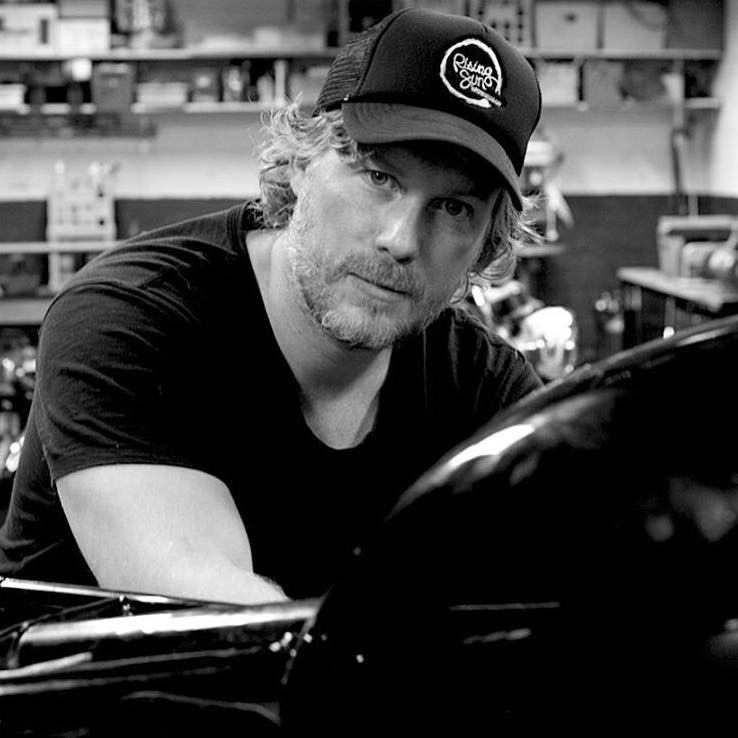This is the ACR ResQLink 410 RLS, in short, it’s an emergency personal locator beacon that uses GPS, Galileo, GNSS, and MEOSAR global positioning systems to send your location to rescue crews when you activate it.
These devices are typically called EPIRBs, which just stands for “emergency position indicating radio beacon.” Up until relatively recently they were quite large and only really suited to use in ships, yachts, 4x4s, trucks, etc. The new generation of smaller models allows anyone to carry an EPIRB in their pocket or backpack.

A History Speedrun: The Emergency Beacon
The concept of a simple radio distress beacon first emerged during the Cold War, as military aircraft and ships needed reliable methods to signal distress (and location) for rescue. The earliest beacons were simple radio transmitters that could be manually activated or triggered upon a major impact.
These early systems had limited range and required overflying aircraft or passing ships to be in relatively close proximity to detect the signal.
In the 1970s, as satellite communications became feasible, interest grew in using satellites to detect and relay distress signals globally. This led to the development of the COSPAS-SARSAT program, an international satellite-based search and rescue initiative established in 1979 by Canada, the United States, France, and the Soviet Union.
COSPAS (a Russian acronym for “Space System for the Search of Vessels in Distress”) and SARSAT (Search and Rescue Satellite-Aided Tracking) formed the backbone of global EPIRB operations. The system officially began operations in 1982, and EPIRBs designed to operate with COSPAS-SARSAT began to be widely adopted in the maritime industry.
These beacons transmitted a digitally encoded signal that included a unique identification number, significantly reducing false alarms and enabling rescue authorities to contact the beacon’s registered owner for verification. Later models incorporated built-in GPS, allowing the beacon to transmit precise coordinates, often accurate to within 3 meters (10 feet).

By the 1990s and 2000s, EPIRBs became mandatory equipment on most commercial seagoing vessels under SOLAS (Safety of Life at Sea) conventions and are also widely used in recreational boating, especially for offshore voyages.
The ACR ResQLink 410 RLS
The ACR ResQLink 410 RLS is a compact, modern EPIRB designed to be small, lightweight, waterproof, and to float. It also works anywhere on the Earth’s surface, and it requires no ongoing subscription to operate – unlike many of its competitors.
The 410 RLS measures in at 4.52” (L) x 2.03” (W) x 1.49” (D) – 11.48 cm (L) x 5.16 cm (W) x 3.78 cm (D) – and weighs 0.33 lbs or (148 g). It has an operating temperature range of -4°F to +131°F (or -20°C to +55°C), and it comes with a 5 year warranty.
When you receive your unit, you enter your details, like name, address, age, vehicle type, and next of kin. If you ever activate the beacon to request a rescue, all of your information is then transmitted to the rescue crew so they know who they’re looking for.
In an emergency you active the beacon, it sends out your exact location and information, and the unit then confirms that search and rescue has received the emergency distress signal – so you know it has worked and that people are coming to help you.

These compact personal EPIRBs are becoming increasingly popular with people into outdoor pursuits like hiking, camping, rock climbing, snowmobiling, skiing, fishing, boating, canoeing, kayaking, paddle boarding, and whitewater rafting, as well as overlanders on both two wheels and four.
The ResQLink 410 RLS can be bought directly from the official ACR store on Amazon here, and as mentioned above it comes with a 5 year warranty.
Images courtesy of ACR


Articles that Ben has written have been covered on CNN, Popular Mechanics, Smithsonian Magazine, Road & Track Magazine, the official Pinterest blog, the official eBay Motors blog, BuzzFeed, Autoweek Magazine, Wired Magazine, Autoblog, Gear Patrol, Jalopnik, The Verge, and many more.
Silodrome was founded by Ben back in 2010, in the years since the site has grown to become a world leader in the alternative and vintage motoring sector, with well over a million monthly readers from around the world and many hundreds of thousands of followers on social media.
